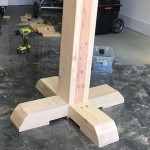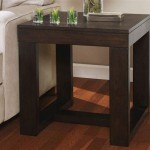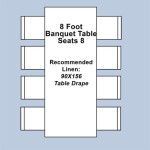Standard Pool Table Length and Width: A Comprehensive Guide
Pool, also known as pocket billiards, is a popular recreational activity enjoyed by individuals of all ages and skill levels. Understanding the dimensions of a standard pool table is crucial, whether one is a casual player, a competitive enthusiast, or a prospective owner. These dimensions directly influence gameplay, strategy, and the overall enjoyment of the sport. This article will delve into the specific length and width measurements of regulation pool tables, explore the variations that exist, and discuss the impact of table size on the game itself.
The Billiard Congress of America (BCA) and the World Pool-Billiard Association (WPA) are the governing bodies that set the standards for pool table dimensions used in professional and competitive play. These standards ensure fair play and consistent conditions across different tournaments and events. Adhering to these standards also allows players to develop skills applicable to a wider range of playing environments. Though variations exist for recreational tables, understanding the regulation sizes provides a baseline for understanding the differences.
Regulation Pool Table Dimensions
The dimensions of a regulation pool table are not simply arbitrary numbers; they are the result of years of refinement and observation aimed at optimizing the game. The precise measurements are crucial for maintaining the integrity of the sport and ensuring consistent gameplay. These specifications address both the playing surface and the overall dimensions of the table.
The playing surface, defined as the area within the cushions where the balls roll, is the key component to understand. For regulation pool tables, specifically those used in professional 9-ball and 8-ball tournaments, the playing surface must be twice as long as it is wide. This 2:1 ratio is fundamental to the game's geometry and strategic possibilities. This ratio is maintained for both 9-foot and 8-foot tables, the most commonly used sizes in professional settings.
A standard 9-foot pool table, often considered the professional standard, has a playing surface that measures 50 inches in width and 100 inches in length. This translates to approximately 4.17 feet wide and 8.33 feet long. These dimensions allow for a wider range of shots, more complex strategies, and a greater emphasis on precision and cue ball control. The larger size also contributes to a more challenging and potentially rewarding experience for skilled players.
An 8-foot pool table, while smaller than the 9-foot variant, still adheres to the 2:1 ratio. Its playing surface measures 44 inches in width and 88 inches in length, which is approximately 3.67 feet wide and 7.33 feet long. This size is frequently found in homes and recreational establishments due to its more compact footprint. While slightly less demanding than the 9-foot table, the 8-foot table still provides ample space for strategic play and skill development.
It is important to note that these measurements refer to the playing surface within the cushions. The overall dimensions of the table, including the frame and rails, will be larger than the playing surface dimensions. The exact overall size varies depending on the manufacturer and the table's design, but generally, one can expect an extra 6 to 12 inches on each side of the playing surface.
Variations in Pool Table Sizes
While regulation sizes are crucial for competitive play, variations exist to accommodate different spaces and player preferences. These variations primarily concern smaller table sizes, often intended for recreational use or environments with limited space. Understanding these variations is important when choosing a pool table for personal use.
Common variations include 7-foot and 6-foot pool tables. A 7-foot table typically has a playing surface of 39 inches wide and 78 inches long (3.25 feet by 6.5 feet), while a 6-foot table usually measures 33 inches wide and 66 inches long (2.75 feet by 5.5 feet). These smaller tables are ideal for homes, game rooms, or areas where space is at a premium. They allow for the enjoyment of pool without requiring the substantial space needed for a regulation-sized table.
Bar-sized pool tables often fall into the 7-foot category, although some might be slightly smaller. These tables are designed for commercial use in bars and pubs, where durability and ease of maintenance are important factors. They are typically coin-operated and built to withstand frequent use.
Novelty or miniature pool tables exist, but they are generally intended for novelty purposes rather than serious gameplay. These tables can vary considerably in size and often do not adhere to the standard 2:1 ratio. Their functionality is often limited, and they are primarily designed for entertainment or as decorative items.
The choice of table size ultimately depends on available space, budget, and the intended use of the table. While regulation-sized tables offer the most authentic playing experience, smaller tables can provide a viable alternative for those with limited space or those who prioritize casual recreation.
The Impact of Table Size on Gameplay
Pool table dimensions are not merely arbitrary measurements; they have a profound impact on the dynamics of the game. The size of the table directly influences the difficulty of shots, the range of strategic options, and the overall skill level required for successful play. Understanding these impacts can help players appreciate the nuances of different table sizes and adapt their strategies accordingly.
On a larger 9-foot table, players have more space to maneuver the cue ball and position it for subsequent shots. This allows for more intricate shot planning, greater emphasis on cue ball control, and the execution of more complex patterns. The larger playing surface also makes it more challenging to pocket balls, requiring greater precision and accuracy. As a result, mastering a 9-foot table typically requires a higher level of skill and dedication.
An 8-foot table, being smaller, introduces a different set of challenges and opportunities. The reduced playing area necessitates more precise shot-making, as there is less margin for error. Angles are more acute, and the proximity of the balls affects shot selection. While cue ball control remains important, the emphasis shifts more towards accuracy and efficient shot planning. The smaller size often leads to faster-paced games with more frequent ball contact.
Smaller tables, such as 7-foot and 6-foot models, tend to favor simpler shots and less complex strategies. The close proximity of the balls limits the opportunities for intricate cue ball maneuvering, and the focus shifts towards basic shot execution. These tables are often more forgiving, making them suitable for beginners or casual players who prioritize fun over technical precision. While skill is still a factor, the smaller size reduces the impact of advanced techniques and strategies.
The distance between the pockets also changes relative to the size of the table. On a 9-foot table, the pockets appear smaller and require more accurate aiming. This, combined with the greater distances involved, makes pocketing balls more challenging. Conversely, on smaller tables, the pockets appear larger relative to the ball size, making it easier to pocket balls, especially for novice players.
Therefore, the choice of pool table size should be carefully considered based on the player's skill level, playing style, and the desired level of challenge. While regulation-sized tables offer the most authentic and demanding experience, smaller tables can provide a more accessible and enjoyable alternative for recreational players.
Ultimately, understanding the standard dimensions of a pool table is essential for both players and those considering purchasing one. The size of the table directly impacts the gameplay, strategic options, and overall skill requirements. By considering the factors outlined in this article, individuals can make more informed decisions and maximize their enjoyment of this popular and engaging sport.

The Official Size Of A Pool Table Canadian Home Leisure

What Is The Standard Size Of A Pool Table Measurement Guide Room

Pool Table Room Size Guide Chart Birkbeck Billiards

Room Size Pooltables Com

What Size Room Will I Need For My Snooker Table Liberty

Table Dimensions 1024 482 Olhausen Billiards

Correct Pool Table Dimensions To Leave Enough Room For Playing Billiard

Pool Table Sizing Dimensions Room Size

Pool Table Room Size Guide Chart Birkbeck Billiards

How To Choose The Right Size Pool Table Hamilton Billiards Snooker Blog








